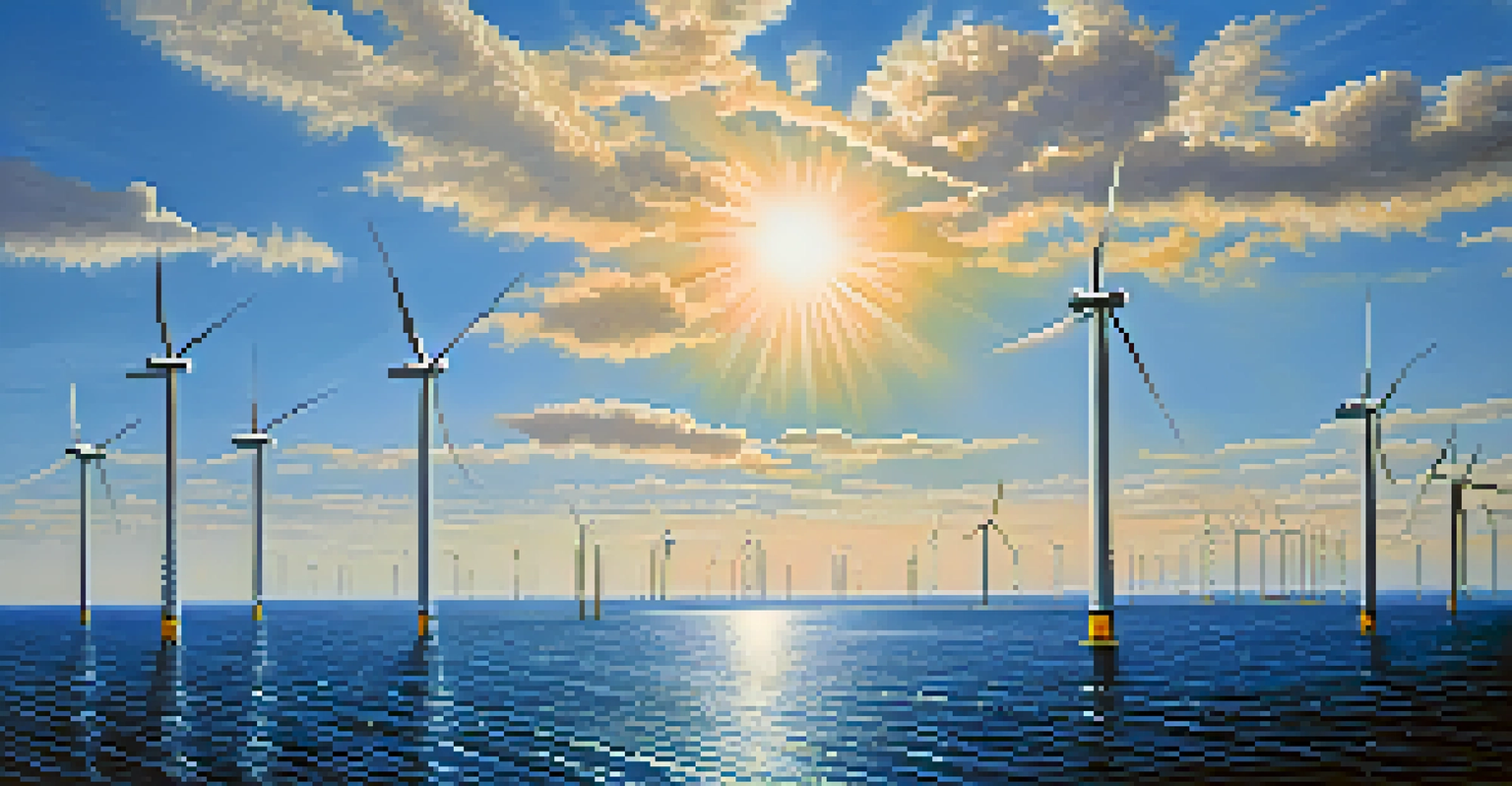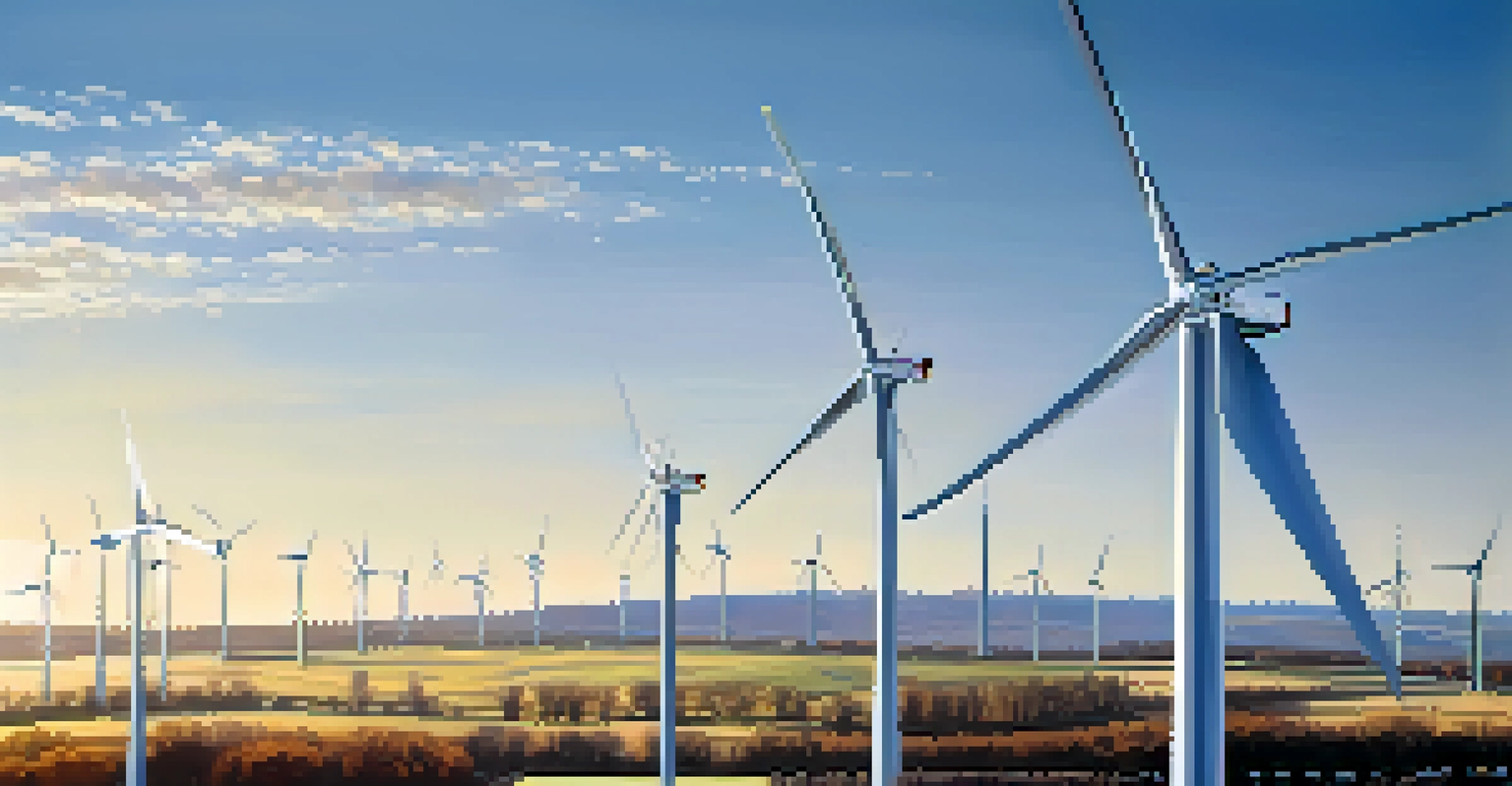Wind Energy Projects in New York City: Current Status and Plans

Introduction to Wind Energy in New York City
Wind energy is increasingly becoming a pivotal part of New York City's commitment to renewable resources. With the city’s ambitious sustainability goals, wind power is seen as a key player in reducing greenhouse gas emissions. This transition not only benefits the environment but also aligns with the city's vision for a greener future.
The future will be green, and the future will be renewable. Wind energy is a vital part of that future.
The potential for wind energy in and around NYC is significant, given its coastal location and technological advancements in turbine design. As urban populations grow, harnessing renewable energy sources becomes more crucial. New York City is actively exploring wind energy projects to meet its energy demands sustainably.
In this article, we’ll delve into the current status of wind energy initiatives in NYC, as well as future plans that promise to reshape the energy landscape. Let’s take a closer look at how these projects are developing and what they mean for the city’s energy future.
Current Wind Energy Projects in NYC
Currently, New York City has several wind energy projects in various stages of development. Notably, the offshore wind project in the New York Bight is one of the largest in the country, aiming to provide substantial clean energy to the city. This project is expected to generate enough electricity to power hundreds of thousands of homes.

In addition to offshore initiatives, there are also onshore wind projects being explored in upstate New York, which will contribute to the city's overall energy supply. These projects are not just about generating power; they also create jobs and stimulate local economies. The collaboration between state and city governments is crucial in advancing these initiatives.
NYC's Commitment to Wind Energy
New York City is actively pursuing wind energy projects to achieve its sustainability goals and reduce greenhouse gas emissions.
Moreover, NYC's commitment to wind energy aligns with the broader goals set forth in the Climate Leadership and Community Protection Act. This legislation mandates significant reductions in carbon emissions, making wind energy a central part of the city’s strategy to achieve these targets.
Future Plans for Wind Energy Expansion
Looking ahead, NYC has ambitious plans to expand its wind energy capacity significantly. The city aims to generate 100% of its electricity from renewable sources by 2040, with wind energy playing a vital role in this transition. This goal reflects a long-term vision for sustainability and resilience against climate change.
Harnessing the power of the wind is not just about energy; it's about creating a sustainable world for future generations.
Future projects include additional offshore wind farms that are being planned to complement existing initiatives. These farms will not only enhance energy production but also create new opportunities for innovation and technology in the renewable sector. The city is also exploring partnerships with private companies to accelerate these developments.
Furthermore, community engagement is a key component of these future plans. NYC is committed to involving local residents in the decision-making process, ensuring that the benefits of wind energy projects are shared widely. This approach promotes transparency and fosters a sense of ownership among citizens.
Economic Impacts of Wind Energy Projects
The economic implications of wind energy projects in NYC are substantial. By investing in renewable energy, the city is not only addressing climate change but also stimulating job creation. From manufacturing and installation to maintenance of wind turbines, these projects offer a variety of employment opportunities.
Moreover, the transition to wind energy can lead to reduced energy costs for consumers over time. As more renewable energy sources come online, the reliance on fossil fuels decreases, which can stabilize or lower energy prices. This economic advantage is crucial for NYC residents and businesses alike.
Economic Growth from Wind Initiatives
Investments in wind energy not only create jobs but also contribute to local economies and can lead to reduced energy costs for residents.
Additionally, investments in wind energy contribute to local economies by generating tax revenues and supporting local infrastructure. These funds can be reinvested into community projects, further enhancing the quality of life in the city. The economic benefits of wind energy extend beyond immediate job creation, fostering long-term growth and sustainability.
Environmental Benefits of Wind Energy
Wind energy is one of the cleanest sources of power available, and its environmental benefits are significant. By harnessing wind, NYC can drastically reduce its carbon footprint, contributing to cleaner air and a healthier urban environment. This shift is vital for combating climate change and improving public health.
Moreover, wind energy helps conserve water resources, as it requires significantly less water compared to fossil fuel-based power generation. This is particularly important in urban areas, where water scarcity can be a concern. By prioritizing wind energy, NYC is taking a proactive approach to resource management.
Additionally, the development of wind energy infrastructure supports biodiversity by minimizing reliance on polluting energy sources. With careful planning and implementation, wind farms can coexist with local wildlife and natural habitats. This balance is essential for maintaining the ecological health of the region.
Challenges Facing Wind Energy Initiatives
Despite the promising prospects of wind energy, several challenges must be addressed for successful implementation. One significant hurdle is navigating the regulatory landscape, which can sometimes slow down project approvals. Streamlining this process is essential to keep up with the growing demand for renewable energy.
Another challenge includes the logistical aspects of deploying wind farms, especially offshore. The complexities of installation and maintenance can require innovative solutions and significant investment. Ensuring that projects are both financially viable and environmentally responsible is crucial for long-term success.
Environmental Advantages of Wind Power
Harnessing wind energy significantly lowers NYC's carbon footprint and supports water conservation while promoting ecological health.
Lastly, public perception and community acceptance play a vital role in the advancement of wind energy projects. Some residents may have concerns regarding noise, aesthetics, or potential impacts on wildlife. Engaging with communities to address these issues and promote the benefits of wind energy is essential for overcoming these barriers.
Conclusion: The Future of Wind Energy in NYC
In conclusion, wind energy represents a transformative opportunity for New York City. With current projects on the horizon and ambitious future plans, the city is well-positioned to harness the power of wind for sustainable energy. This transition not only aligns with environmental goals but also promotes economic growth and resilience.
As NYC continues to invest in wind energy, it serves as a model for other urban centers aiming to embrace renewable resources. The collaborative efforts of government, businesses, and communities are essential for realizing the full potential of these initiatives. Together, they can create a cleaner, more sustainable future.

Ultimately, the journey toward wind energy in New York City is just beginning. With ongoing innovation and commitment, the city can lead the way in renewable energy adoption, setting a precedent for others to follow. The future of wind energy in NYC looks bright, promising a cleaner and greener urban landscape.